Herring Home | Fishing for herring | Back to The Nets
Net making
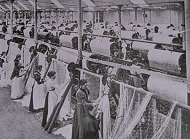
Until the mid 19th century nets were home made from linen or hemp. These nets were very heavy, so only a limited number could be carried on a small fishing boat. It was a cottage industry in which skilled men and women wove nets over the winter months. In 1812, James Paterson patented the first Scottish netmaking machine, or loom, and from the 1820s larger, factory-made nets were available. However, it was not until the 1860s, that factory-made cotton nets were introduced. These nets were lighter, less bulky and more flexible as well as being better finished, although they did tear more easily. Boats could carry far more of the cotton nets and they were easier to haul.
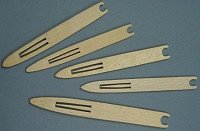
These new nets allowed the drifters to catch more herring. This meant that more space was needed aboard for the catch and this encouraged the use of larger boats and as bigger boats were used, they could carry still more nets. In 1860 a drifter might carry 24 nets with a drift length of half a mile, and by the 1880s, boats could carry up to 60 nets and the drift might be two miles long. By the middle of the 20th century, 80 nets might be used.
Net maintenance
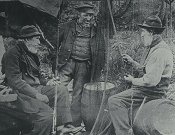
After his boat, the nets were the most expensive gear of the fisherman. They took considerable maintenance and had to be replaced frequently. Routine work was carried out onboard, but most work was carried out on dry land. On return from each fishing trip the nets had to be laid out or hung up to dry. They had to be checked for holes or tears and these had to be mended. Much of this work was carried out by the women.
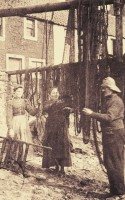
Constant exposure to salt water caused the nets to rot. To protect them, they were immersed in solution to reduce damage from salt, bacteria and wear and tear.
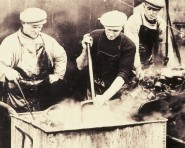
Before the 19th century an extract of oak or birch bark was used, which was known as barking. After 1840, the use of bark was replaced by cutch, an extract from the trunks of Indian acacia trees. It was boiled up to make a tar-like solution in which the nets were soaked. However, the process continued to be known as barking. Some fishermen used a hot solution of the chemical called alum, which made the nets white. Alum was used by fishermen of the Forth and was more commonly used in winter, as it camouflaged the nets. After the Second World War natural fibres were replaced by synthetic twine, which was stronger and didn't need to be preserved.
Herring Home | Fishing for herring | Back to The Nets